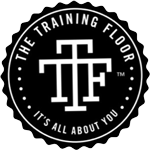What is a foam roller, How do I use it?
-Jeff Kurr Contributor – Corrective Exercise and Outdoor Fitness
Self-myofascial release, also known as “foam rolling,” has transformed from a once mysterious technique used only by professional athletes, coaches, and therapists to a familiar everyday practice for people at all levels of fitness.
Self-myofascial release is a fancy term for self-massage to release muscle tightness or trigger points. This method can be performed with a foam roller, lacrosse ball, Theracane, or your own hands. By applying pressure to specific points on your body you are able to aid in the recovery of muscles and assist in returning them to normal function. Normal function means your muscles are elastic, healthy, and ready to perform at a moment’s notice.


Do I Have Tight Muscles or Trigger Points?
Trigger points are specific “knots” that form in muscles. They are unique and can be identified because they will refer pain. Pain referral, for our purposes, can most easily be described as the pain felt when pressure is applied to one area of the body, but the pain is felt or radiated in another area. A common example of a trigger point is felt while foam rolling your iliotibial (IT) band as it causes pain to radiate up to the hip or all the way down the leg to the ankle. When rolling or working on tight/sore muscles you will experience discomfort or pain. Think of it like the pain you get while stretching. It should be uncomfortable, but not unbearable, and when you are done it should feel better.


Why Am I Doing Something That Hurts?
For many, deep tissue massage is easy to understand. Ideally someone is able to work out the knots in your muscles, and it is commonly known this process may be uncomfortable and at times painful. Self-myofascial release provides the user the ability to control the healing and recovery process by applying pressure in precise locations, because only you can feel exactly what is happening. It is always recommended to consult with your physician or physical therapist for therapeutic/sharp pain and receive approval before starting self-myofascial release. For most people you will be cleared immediately and your doctor will encourage the practice.
Releasing trigger points helps to reestablish proper movement patterns and pain free movement, and ultimately, to enhance performance. Utilizing stretching alone is not always enough to release muscles tightness, which is why foam rollers have thrived on the mass market. Imagine a bungee cord with a knot tied into it and then envision stretching the cord. This creates tension, stretching the unknotted portion of the muscle and the attachment points. The knot, however, has remained unaltered. Foam rolling can assist in breaking up these muscle knots, resuming normal blood flow and function. The goal to any corrective or recovery technique is to get you back to the point of normal functioning, as if nothing was ever wrong. When was the last time you trained like you were a teenager, going hard without a second thought, and injuries were something that only happened due to physical trauma like a 250lb linebacker hitting you?
What Happens After Rolling?
You may be sore the next day. It should feel as if your muscles have been worked/released, however you should not push yourself to the point of excessive soreness. Drink plenty of water, get enough sleep, and eat clean. This will help to flush your system and fuel your muscles more effectively. Give it 24-48 hours before focusing on the same area again.
